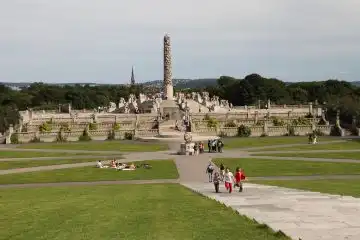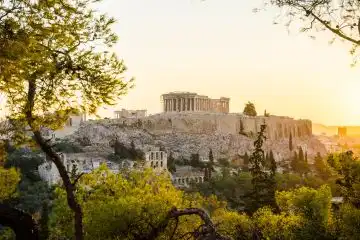Great wall forbidden city and historical places in Beijing China
Beijing, the dynamic capital of China, is a captivating blend of imperial legacy and modern innovation. Exploring the historical places in Beijing China is like walking through a living museum. There, each street, gate, and temple further holds echoes of the past. For over eight centuries, it has been the center of power, culture, and history in China. Above all, the city is renowned for its collection of architectural marvels and time-honored relics. That meanwhile tell the stories of emperors, dynasties, and spiritual traditions. From the vast stretches of the Great Wall to the ornate halls of the Forbidden City, Beijing is a treasure trove for heritage travelers.
The Great Wall of China: An Ancient Ingenuity
Few structures in the world evoke the grandeur of ancient civilization like the Great Wall of China. Designed as a massive defensive system, it stretches over 13000 miles across the northern landscape. It is the most famous historical places in Beijing China and a must visit. That stands out further with some of the best-preserved sections located just outside Beijing. Visiting the Great Wall offers firstly a glimpse into military strategy and construction techniques. It further offers breathtaking views of rolling hills and rugged mountains. The wall was built and expanded by various dynasties, most notably the Ming Dynasty. That had fortified key stretches using brick and stone. Walking its steps is a humbling experience-each stone laid over centuries by millions of hands. Further, each tower seems a watchful guardian over the vast Chinese frontier.
The Forbidden City: A Palace of Power and Precision
At the heart of Beijing lies the Forbidden City. It was once the exclusive domain of emperors and royal courtiers. Completed in 1420 during the Ming Dynasty, this is an immense palace complex. That firstly covers 180 acres and contains nearly 1000 preserved buildings. Its architecture is a masterpiece of symmetry and symbolism. That meanwhile reflects Confucian principles and cosmological beliefs. The outer court was used for ceremonial affairs. While the inner court was the emperor's residence and administrative hub. It is rich with golden roofs, red walls, and intricate woodwork. Above all, it embodies the pinnacle of imperial Chinese architecture. Now home to the Palace Museum, it houses an astonishing collection of cultural relics, paintings, and historical documents. The top places of Bangkok are also the famous attractions to explore. That meanwhile provide insights into the opulence and authority of past dynasties.
Temple of Heaven: Where Heaven Meets Earth
South of the Forbidden City lies the Temple of Heaven, a harmonious complex. That was built in the 15th century as a sacred site for imperial rituals. Emperors would come here to pray for good harvests and divine favor. The site is designed according to strict cosmological patterns, with circular buildings. That meanwhile represents the heavens and square courtyards symbolizing the Earth. The Hall of Prayer for Good Harvests, with its iconic triple-gabled roof, is perhaps the most recognizable structure. Its wooden construction-built without a single nail-is a feat of traditional Chinese engineering. All these further make it one of the top historical places in Beijing China to explore. However, early morning visits reveal another layer of cultural life. As locals gather to practice tai chi, sing opera, or play traditional instruments, giving the space a living spirit.
Summer Palace: Royal Gardens of Tranquility
Located in the northwest of Beijing, the Summer Palace is a magnificent example of landscape design. This one of the main historical places in Beijing China firstly blends natural beauty with man-made artistry. It served as the summer retreat for Qing Dynasty emperors. That further offers a peaceful escape from the heat of the Forbidden City. The centerpiece is Kunming Lake, an expansive body of water inspired by Hangzhou's West Lake. Surrounding it are pavilions, bridges, corridors, and the Tower of Buddhist Incense perched atop Longevity Hill. Walking along the Long Corridor-decorated with over 14000 colorful paintings-you're immersed in legends, literature, and imperial leisure. The Summer Palace further captures the aesthetic ideals of harmony between humanity and nature. With that, it still remains a popular escape for both tourists and locals alike.
Ming Tombs: Eternal Homes of Emperors
Nestled in a scenic valley about 50 kilometers north of the city, the Ming Tombs. They are a solemn reminder of China's reverence for the afterlife. Thirteen emperors of the Ming Dynasty were buried here. Their tombs were built according to feng shui principles that align the natural environment with spiritual needs. The Sacred Way is a long ceremonial avenue lined with stone statues of animals and officials. That further leads to the tomb area. Among these tombs, Dingling is the most famous and the only one excavated. Visitors exploring the historical places in Beijing China can meanwhile explore its underground chambers. That contain thrones, imperial artifacts, and intricate stonework. The Ming Tombs are not only burial sites-but they're also sacred places designed to secure peace and authority even in death.
Tiananmen Square: The Political Heart of Beijing
Spanning over 440000 square meters, Tiananmen Square is one of the world's largest public squares. This one of the famous historical places in Beijing China is a site of profound political importance. The site is flanked by monumental buildings for example the Great Hall of the People and the National Museum of China. It has been the setting for key moments in China's modern history. The square itself was designed to impress, symbolizing the unity and strength of the nation. At its center stands the Monument to the People's Heroes. While the southern end features the Mausoleum of Mao Zedong drawing visitors from across the country. The square's atmosphere is simultaneously awe-inspiring and reflective. That meanwhile provide a deeper understanding of China's journey through the 20th century.
Beihai Park: Imperial Gardens and Serene Lakes
Beihai Park is located near the Forbidden City. It is one of the oldest and most enchanting public parks in China. Originally part of the imperial gardens, it has over a thousand years of history. That further dates back to the Liao and Jin Dynasties. At its heart lies a large lake with Jade Flower Island, topped by the iconic White Dagoba. That is firstly a Tibetan-style stupa built in the 17th century. It makes it one of the famous historical places in Beijing China. The park's elegant design further includes hidden pavilions, winding bridges, and lotus-filled ponds. It is a place where poetry and nature further come together. That remains a favorite among Beijing's residents for quiet reflection, leisurely strolls, and artistic inspiration.
Lama Temple: A Blend of Han and Tibetan Buddhism
The Lama Temple, or Yonghe Gong, is one of Beijing's most important Tibetan Buddhist monasteries. Originally built as a residence for a Qing prince, it became a temple in the 18th century. It has remained a center for Buddhist learning and worship ever since. As you pass through its richly adorned halls, you'll encounter vibrant murals and gold-gilded statues. Witness the awe-inspiring 26-meter-tall Maitreya Buddha carved from a single sandalwood tree. The scent of incense fills the air, and visitors can observe monks in prayer. That further create a deeply spiritual experience. However, the Lama Temple stands as a testament to religious tolerance. Above all, it is an architectural splendor among the historical places in Beijing China.
Zhihua Temple: Preserving Ming Dynasty Heritage
A lesser-known but culturally significant site, the Zhihua Temple. It firstly offers a unique window into Ming Dynasty Buddhist culture. Built in 1444, this temple retains its original wooden structures, delicate carvings, and classical music traditions. It is home to ancient musical ensembles that perform traditional Buddhist pieces. That further offer a rare auditory experience that takes you back centuries. Unlike the more tourist-heavy temples, Zhihua remains quiet and contemplative. That meanwhile makes it ideal for travelers seeking authenticity. The temple complex includes a main prayer hall, scripture library, and living quarters for monks. All had preserved the serene atmosphere of a functioning place of worship.
Fayuan Temple: A Living Monastic Tradition
Founded in the 7th century, Fayuan Temple is among the oldest in Beijing. It still remains an active center of Buddhist education. As the location of the China Buddhist Academy, it is both a sacred site and an academic hub. The temple has tranquil courtyards, ancient bell towers, and well-preserved Tang-style architecture. They all firstly provide a peaceful retreat from the city's bustle. Inside, you'll find rare sutras and relics that date back over a thousand years. Above all, Fayuan has a unique combination of historical depth and living religious tradition. That further makes it a must-visit for those wanting a deeper understanding of Chinese spirituality.
Prince Gong's Mansion: Glimpses into Qing Nobility
Prince Gong's Mansion is a grand Qing Dynasty estate showcasing the opulence of 19th-century aristocracy. The mansion complex includes ornate courtyards, residential halls, rock gardens, and a private theater. That once hosted Beijing opera performances. It offers not only architectural beauty but also insight into the lifestyle, philosophy, and politics of Qing nobility. The preservation of personal belongings, calligraphy, and decorative art gives visitors a richly textured narrative of life during that period. It's a deeply immersive experience that connects historical study with sensory appreciation.
Bell and Drum Towers: Keeping Time in Ancient Beijing
Standing guard at the northern end of the central axis of old Beijing, the Bell and Drum Towers. They had once served as the city's official timekeeping center. These towering stone and wooden structures would mark the hours of the day with resonant tones. That can be meanwhile heard throughout the ancient capital. Climbing the steep steps of the Drum Tower rewards visitors with panoramic views of Beijing's traditional neighborhoods, or hutongs. Regular performances of drumming techniques showcase how time was once measured and communicated. Together, these towers are a reminder of how history was not only seen and built-but also heard.
Conclusion: Beijing's Timeless Allure
In short, Beijing's historical landmarks are more than tourist attractions. They are vibrant chapters in the story of one of the world's oldest continuous civilizations. Exploring the historical places in Beijing China reveals the delicate interplay between tradition and transformation. That takes you from imperial palaces and sacred temples to tranquil parks and commanding walls. These sites meanwhile reflect centuries of philosophy, politics, art, and architecture. Each visit further deepens one's appreciation for China's cultural legacy and modern complexity. Whether you are a history enthusiast, spiritual seeker, or casual traveler, Beijing offers an unforgettable journey through time.







